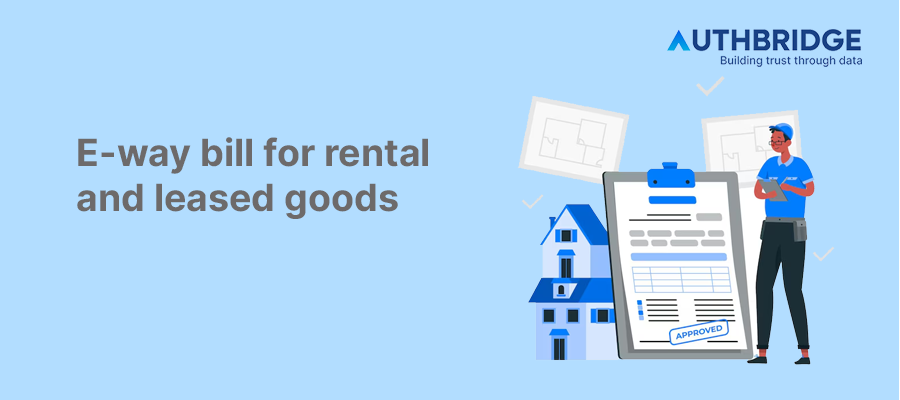Understanding GST And E-Way Bill For Rental And Lease Services: A Comprehensive Guide

Introduction to GST and Its Impact on Rental and Lease Services
The Goods and Services Tax (GST), implemented on July 1, 2017, in India, revolutionized the taxation landscape, amalgamating several indirect taxes into a single tax. This value-added tax is levied at every stage of the supply chain, encompassing manufacturing, sale, and consumption, aiming to create a unified national market.
Overview of GST in India
GST is structured around a multi-tiered rate system, designed to categorize services and goods into different slabs. For rental and lease services, GST has brought significant changes, particularly in how these services are classified and taxed. It's crucial for businesses in the rental and lease sector to understand these changes to ensure compliance and optimize their tax liabilities.
Classification of Rental and Lease Services Under GST
Under GST, rental and lease services are considered a supply of services. The tax rate and compliance requirements vary based on whether these services are provided with or without operators. This classification impacts the applicable GST rate and the specific compliance measures that service providers must adhere to.
- With Operators: Services provided with operators, such as vehicles or machinery along with a driver or operator, are taxed at a rate determined by the nature of the service. For instance, vehicle rentals with drivers for transportation of goods might attract a different GST rate compared to machinery rentals with operators for construction purposes.
- Without Operators: When services are provided without an operator, such as leasing a car without a driver, the GST rate is determined by the type of service. The rate could vary significantly, reflecting the diverse nature of goods and services within this category.
Understanding these classifications is essential for businesses to accurately calculate their GST liabilities and ensure compliance with the tax regime. It also helps in strategizing business operations to maximize tax efficiency, especially in sectors heavily reliant on rental and lease arrangements.
Rental and Lease Services With Operators
Definition and Examples
Rental and lease services with operators involve providing both the equipment (like vehicles or machinery) and the personnel to operate it. Common examples include crane rentals for construction sites with crane operators and car rentals with drivers for transportation services.
GST Implications and Rates
These services are classified under GST as supply of services. The GST rate applied depends on the service type and the operator's nature. For instance, vehicle rentals with drivers typically attract a GST rate of 5%.
Service Type | GST Rate |
Vehicle rental with driver | 5% |
Machinery rental with operator for construction | 18% |
Compliance Requirements for Service Providers
Providers of such services must register for GST if their turnover exceeds Rs. 20 lakhs (Rs. 10 lakhs for special category states). They must adhere to GST provisions, including invoicing, returns filing, and tax payment.
Rental and Lease Services Without Operators
Definition and Examples
This category includes services where equipment, like vehicles or machinery, is rented out without an operator. Examples are car rentals without drivers and machinery rentals for DIY projects.
GST Implications and Rates
The GST rate for these services is determined by the type of equipment rented. For example, vehicles for goods transportation might be taxed at 18%.
Equipment Type | GST Rate |
Vehicle for goods transportation | 18% |
Machinery without operator | 18% |
Compliance Requirements for Service Providers
Similar to services with operators, providers must register for GST beyond the turnover threshold and comply with all relevant GST regulations.
Input Tax Credit for Rental and Lease Services
Eligibility and Conditions
Service providers can claim input tax credit (ITC) for GST paid on goods and services used in providing rental or lease services. This can significantly reduce the net GST liability.
Expense Type | ITC Eligibility |
Fuel for rented vehicles | Yes |
Maintenance of leased machinery | Yes |
Food and beverages | No |
Exclusions and Limitations
Certain expenses, like food and beverages or personal grooming, are not eligible for ITC. It's crucial for businesses to understand these limitations to maximize their tax credits legally.
Challenges and Solutions in GST Compliance for Rental and Lease Services
Common Compliance Challenges
Businesses often face challenges in categorizing their services correctly under GST, determining the applicable rates, and managing ITC claims.
Challenge | Solution |
Correct service categorization | Consultation with GST experts |
Managing ITC claims | Implementing GST-compliant accounting software |
Best Practices for Ensuring Compliance
- Regular Training: Keep staff updated on GST regulations.
- GST-Compliant Software: Use software for accurate invoicing and tax filing.
- Expert Consultation: Regularly consult with GST experts for compliance and optimization strategies.
Conclusion
The GST regime has standardized the tax implications for rental and lease services in India, with specific considerations for services provided with or without operators. Understanding these distinctions is crucial for businesses to ensure compliance, optimize tax liabilities, and claim eligible tax credits. By adhering to the GST provisions and employing strategic practices, businesses can navigate the complexities of GST compliance effectively, avoiding penalties and legal consequences.
Category

Abhinandan Banerjee
(Associate Manager - Marketing)
Abhinandan is a dynamic Product and Content Marketer, boasting over seven years of experience in crafting impactful marketing strategies across diverse environments. Known for his strategic insights, he propels digital growth and boosts brand visibility by transforming complex ideas into compelling content that inspires action.



